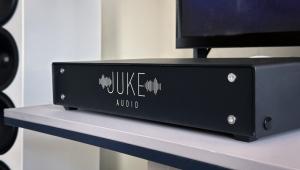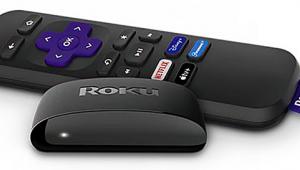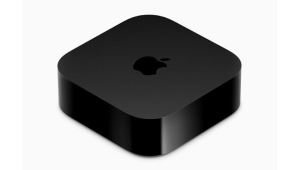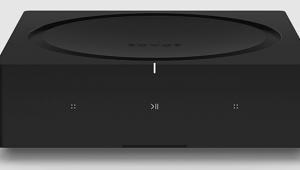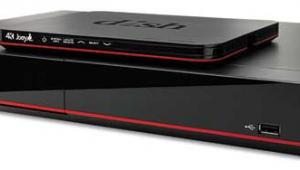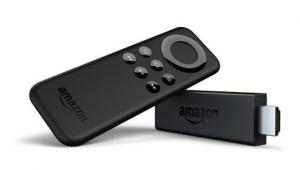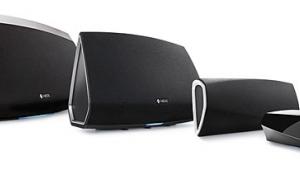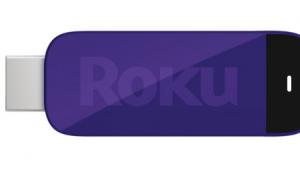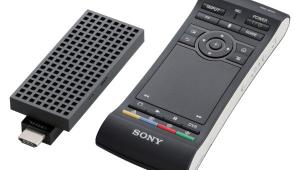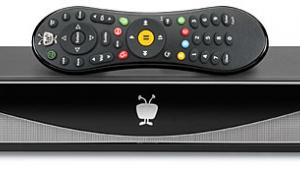Omnifi DMS1 Streamer and DMP1 Player
Liberating gear such as that manufactured by Omnifi, a division of Rockford Fosgate, compels me to look at where I spend the bulk of my waking hours: at the office, in the home theater, or in the car. As with all great action heroes, my daily adventures are set to music—not a problem when I'm chained to my desk with my entire music library at my disposal on my hard drive. A portable player is one way to transcend the confines of the workspace, and some even arrive bundled with cables to plug into a hi-fi system for all to enjoy, but this is hardly an elegant approach.
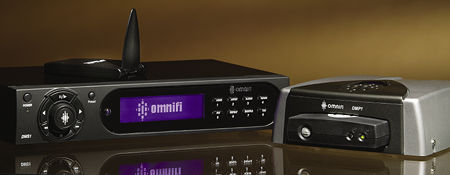
How about a dedicated living-room component—a streaming device that allows us to access and play all of the music inside the PC? The DMS1 (Omnifi's first digital media streamer) is a compact and lightweight box, due to the fact that it contains no data storage: Via the on-face controls and the remote, you command the playback of your computer's music tracks from a second location, complete with title and artist information displayed on the blue LED screen.
The first step is to install the SimpleCenter software on an Ethernet-equipped PC in order to import your audio files with just a few clicks. The DMS1 hardware plugs into an A/V receiver and also (optionally) directly into the TV for big-screen navigation. A home network adapter—either the included dongle for wired access or an optional Wi-Fi adapter, although only two specific USB Wi-Fi-B adapters will work—connects to one of the two onboard USB ports. Establishing successful communication between the DMS1 and the PC was the trickiest part, requiring me to literally dial-in the settings from my wireless router using the unit's multifunction knob and the menu system (thankfully, the well-designed Linksys Wi-Fi gear I use makes this pretty easy). Would I have preferred that the DMS1 found my network on its own? Absolutely. A big deal? Nah.
You can add favorite songs on the fly to a playlist of up to 20 tracks by pressing and holding the Fav button, while more-elaborate playlists can be created in SimpleCenter on the computer and accessed by the DMS1. You can select eight playlists by the numbered buttons. With an approximately 100-foot wireless range (no length limit for a wired network, naturally) and no ceiling on the quantity of music accessible from the living room, the DMS1 is all about freedom. What could be better?

How about taking your music collection anywhere? The home unit's brother is the DMP1 digital media player for the car, an in-dash controller with a breakout box that provides mobile data storage on a removable hard disk drive. One of these cartridges holds more than 300 hours of music, and additional cartridges are available. Understand that this will be a second device for the car, an add-on to the existing audio system. I'm juggling a pair of removable faceplates now, but that beats a broken window and motoring a cappella any day.
The wiring goes behind the dash, with a mounting bracket for the controller. I took this opportunity to seek a step-up car stereo with RCA-type auxiliary inputs, and I chose a Blaupunkt Casablanca CD52 (which required a basic mini-plug-to-RCA adapter). This truly digital DigiCeiver digitizes incoming radio waves for remarkable sensitivity, and a sophisticated equalizer does wonders for the timbre. A skilled amateur might want to tackle this installation; all others will want a pro's help.
The DMP1's efficient head unit is happily similar to the DMS1's front panel, with clever features like the ability to jump 10 percent down any list—artists, albums, and so on—at a touch of the Next Track button. You can create new playlists in the car, but pull over for any decisions that might take your eyes off the road for that long. The same Wi-Fi adapter (patched into the back of the hard-drive housing and positioned inside the car's front or back window) turns the DMP1 into a Wi-Fi device, assuming that you park in range of the wireless router; however, Wi-Fi is not recommended for uploads larger than 500 megabytes.
It's better to initially remove the disk-drive cartridge from the housing and connect it directly to the PC. Once I'd loaded my 16 gigabytes of music (about a 30-minute process), I could schedule automatic daily updates of newly acquired tunes at a convenient time, à la TiVo—typically when the car sits idle, since it doesn't need to be turned on during the transfer.
Although the DMS1 and DMP1 work independently of one another, both exploit the musical treasures of the PC whilst removing the ties that bind us to the workspace.
Highlights
• Easy navigation, even for vast music libraries
• A new level of freedom for music lovers
• Wireless convenience for streaming (DMS1) and limited uploading (DMP1)

